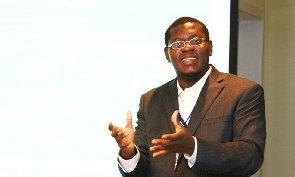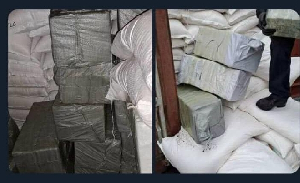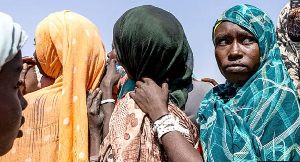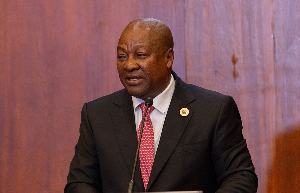Africa is responsible for only about 4% of global emissions, and the continent’s institutional environment impedes investment in green energy. However counterintuitive, if not outrageous, it may sound, wealthy countries should instead consider boosting investment in Africa’s carbon-intensive industries.
Many in the global development community are pushing for rich countries to transfer large sums of money to developing countries to help them shift to cleaner energy without impeding economic growth. This advocacy raises important economic questions that do not receive enough attention in the mainstream press.
Consider Africa. The world’s second largest continent is said to have contributed only 1% of historic carbon emissions. Today it generates only 4% of global emissions. Africa’s annual anthropogenic emissions of carbon dioxide equivalent total some 1.4 billion tons, 35% of which is from South Africa alone.
Africans’ carbon dioxide emissions are just 20% of the per capita global average. Yet the world needs to cut nearly ten billion tons of CO2 per annum to have any chance of meeting the 2030 target of a “maximum increase of 2° Celsius,” according to the Intergovernmental Panel on Climate Change.
The stark reality, then, is that taking Africa all the way to net-zero emissions would burden Africans with a significant proportion of the global cost.
The price of Africa’s contribution to meeting this emissions target is estimated at $1.3 trillion, which is what African leaders and their advisers are asking the rest of the world to pay.
But what if, rather than paying Africa not to pollute, the rich world instead paid Africa to build more carbon-intensive industries. It sounds outrageous until one realizes that Africa’s inward foreign direct investment totals about $80 billion per year.
Based on current benchmarks for the carbon intensity of industrialization, Africa could add three percentage points to its annual economic growth with a corresponding increase in emissions of roughly 100%. The FDI requirement for this boost is around $40 billion, and we could even pad the number to $80 billion.
By doubling both emissions and FDI in Africa, the 4.6% average annual growth of the last few decades could rise to nearly 8% or potentially more, owing to multiplier effects. Growing at this rate, Africa would double its per capita income by 2030, which could be enough to lift 90% of the population out of poverty.
This would be especially good news if the environmental Kuznets curve holds true in the long run, with CO2 emissions continuing to decline in many countries as national income rises. Africa’s institutional environment will likely remain more receptive to polluting industries than to green industries for the simple reason that green industries require higher levels of skills, capital, and purchasing power.
Given Africa’s small net contributions, it may be sensible to tolerate longer horizons for decarbonization on the continent, because richer countries have a stronger comparative advantage in switching to green industries.
Setting aside the moral imperatives, economic analysis can produce some counterintuitive results. Many people are skeptical about the basis of “green aid” to Africa. And, considering that non-anthropogenic emissions in Africa are far higher than total emissions in the US, the world’s largest overall polluter, others question what marginal reductions in manmade emissions in Africa would actually mean in the broader scheme of things.
Institutional receptivity can be generalized to encompass the full context of institutional quality. Some argue that previous episodes of “normal aid” to Africa have had mixed results. “Climate finance” is, after all, not a truly new category of aid, just a rebranding of money that comes from the same old pots of development aid.
What basis, then, is there for believing that $1.3 trillion in “green aid” is likely to have generally positive outcomes? Such complex trust factors complicate the process of crafting green aid to finance net-zero transitions in places like Africa. The inertia of aid effectiveness supports the suggestion of promoting “normal FDI” with no green strings attached. The continent has already adapted to such financing. A new paradigm of green aid requiring deep institutional reform has already met some entrenched skepticism, even if it has not been voiced openly.
The growing number of frameworks to tackle climate-finance corruption clearly hints at this. Of course, private investors could act to “green” FDI on their own, but coordination in transnational private markets is difficult, complicating any such shift. New multilateral public-private partnerships are required to reconcile the moral, political, and economic trade-offs, but progress is slow, as we have seen with the Green Climate Fund.
Institutionalization of these new structures will take time. In their absence, there is strong reason to doubt that large amounts of green financing will go to the developing world and Africa to pay for a just climate transition. This pessimism is rarely expressed in polite company. But why keep up the charade if the prospects are so poor?
This article was published by www.project-syndicate.org
Opinions of Saturday, 17 December 2022
Columnist: Bright Simons















